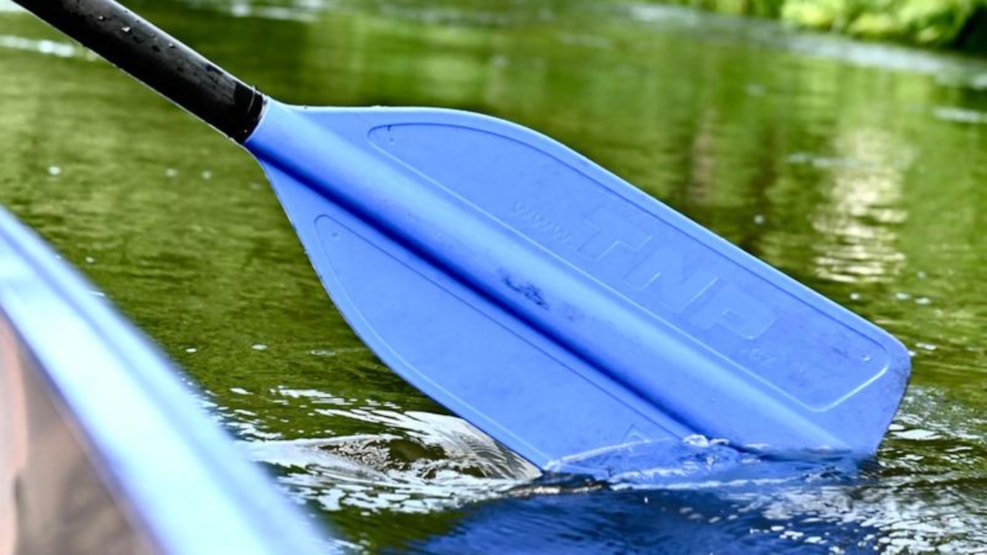
3-day canoe trip: Tørring - Ry
Embark on a wonderful three-day canoe adventure along the Gudenå River, where you'll experience scenic stretches of nature, historical landmarks like Øm Monastery, and the viewpoint Sukkertoppen.
Distance: 51 km
Duration: 3 days
Portages: 3 total (2 with cart, 1 via slipway)
Start of the tour: Tørring Camping – a classic departure point
Most multi-day canoe trips begin at Tørring Camping – the same spot where adventurer Hakon Mielche began his journey on the Gudenå River in 1935. A memorial stone in Tørring commemorates his feat with the inscription: "from the sources of the Gudenå to its mouth in Randers."
The river's sources are located about 8 km northwest in Tinnet Krat and can be reached on foot via a marked trail. On the first leg of your canoe trip, you’ll glide through the winding, low-lying Uldum Kær – a wetland area filled with small streams and dense reed beds.
First night: Åle or Åstedbro campsites
After about three hours of paddling, you’ll reach Åle Campsite – a peaceful and cozy spot with the option for a walk in the nearby Rask Mølle Forest.
If you continue for another hour, you’ll arrive at Åstedbro Campsite – another great overnight option, especially if you started your day early. Some paddlers choose to go as far as Brestenbro to spend the night at Gudenåcamping Brædstrup.
The Gudenå widens – toward Vestbirk
After Brestenbro, the river becomes wider and deeper. At Bredvad Mill, there is a weed-cutting facility – make a sharp right turn here. Shortly after, just before the bridge, you’ll enter a small lake with a rest area that includes a toilet and picnic benches.
The trip continues into the dammed lakes near Vestbirk Hydropower Station. Paddle along the left bank through the shallow Bredvad Lake. You can go ashore at Vestbirk Camping or continue through the canal to Naldal Lake, which also has a landing spot.
Portage at Vestbirk Hydropower Station
From Naldal Lake, continue under the old railway bridge – now a nature trail. Notice the new wooden bridge built to replace the old concrete one.
Next, paddle across Vestbirk Lake to the "ice barrier" and pass through a pipe under the road. Here, you’ll need to pull the canoe ashore and portage to the next canal. Canoe carts are available, and this is a great place for a break. You can also visit the well-preserved turbine hall of the old power station.
Through the valley toward Mossø
This stretch is one of the most scenic on the tour. Let the current carry you gently while you enjoy the birdlife – you might even spot a kingfisher.
Voervadsbro Campsite lies close to the former inn and is a suitable overnight stop. Continue to Vilholt Mill – keep right, as the left side is a fish passage. Shortly after, you’ll find another rest area.
Klostermølle and dense vegetation
The river narrows and the current strengthens. Paddle through dense, almost jungle-like vegetation toward Klostermølle, where Voer Monastery once stood 800 years ago. The monks dug a canal here to power their mill – later, a paper factory was built on the site.
The old drying barn still stands and now houses an exhibition and birdwatching tower. From here, you’re encouraged to hike up to Sukkertoppen – a 108-meter hill offering a fantastic view of Mossø. The hike takes about an hour.
Gammel Rye and the Salten River
As you approach the confluence of the Salten River and the Gudenå, turn left and paddle about 500 meters upstream to Gammel Rye Campsite, which offers both overnight accommodations and facilities. You’re not allowed to paddle beyond this point.
The trip then returns to the main flow of the Gudenå, continuing toward Gudensø. At Emborg Bridge, you’ll find another rest stop with excellent facilities, including a covered picnic area.
Øm Monastery and Gudensø Lake
At the mouth of the Gudenå into Gudensø, turn right. After about 300 meters, you’ll reach a wide sandy beach where the canoe can easily be pulled ashore. A path leads to Øm Monastery – founded in the 12th century and demolished in 1561 by royal decree.
Today, visitors can explore the ruins, a museum with fascinating archaeological finds, and a monastery garden showcasing medieval medicinal herbs.
Birdlife in Gudensø and finishing in Ry
Gudensø teems with wildlife – grebes, ducks, herons, coots, and cormorants are common sights. Some coves and reed beds are protected areas where paddling is prohibited.
The final stretch takes you through Ry Møllesø. Along the way, you’ll pass Holmens Camping, where you can resupply or spend the night. Shortly after, you’ll arrive in Ry. Keep to the left and paddle under the main road through the passage built in 1998.
A short portage leads to Lillesø – from there, turn right and finish your trip at Ry Canoe Center, where the harbor marks the endpoint.